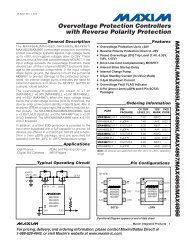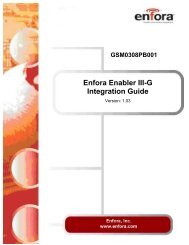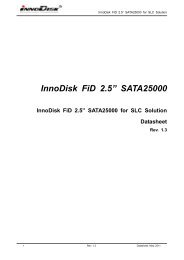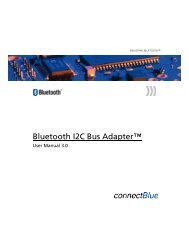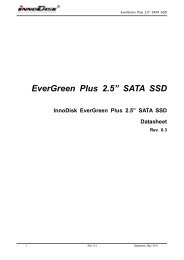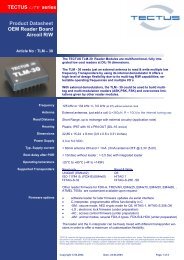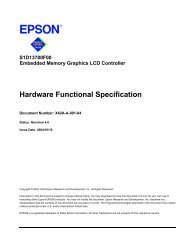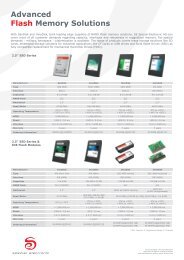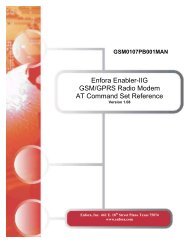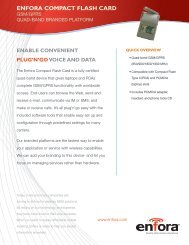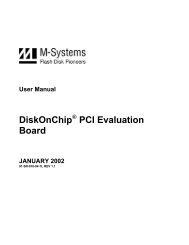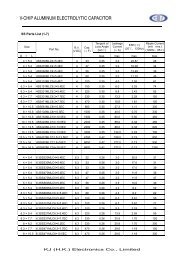AT+i Programmer's Manual - SE Spezial-Electronic AG
AT+i Programmer's Manual - SE Spezial-Electronic AG
AT+i Programmer's Manual - SE Spezial-Electronic AG
Create successful ePaper yourself
Turn your PDF publications into a flip-book with our unique Google optimized e-Paper software.
16 IP Registration<br />
IP Registration<br />
When iChip goes online in a dial-up environment, it is normally assigned a dynamic IP<br />
address during PPP establishment. Since a different IP address is usually assigned every<br />
session, it is not practical to use iChip as a server, since the clients do not know what IP<br />
address to use. Furthermore, under these restrictions, there is no practical way to know<br />
whether a specific system is online or offline. A similar problem occurs when using the<br />
iChip LAN, which is configured to use a DHCP server. In this environment, a different IP<br />
address is usually assigned every time the iChip LAN boots and connects to the LAN.<br />
To overcome this problem, iChip incorporates built-in procedures designed to register its<br />
IP address on a server system each time it goes online. Once registered, client systems<br />
may interrogate the servers in order to verify the online status of a specific system and<br />
retrieve its currently assigned IP address. The IP registration process is governed by<br />
several <strong>AT+i</strong> parameters. Once these parameters are configured, iChip registers its IP<br />
address accordingly when it goes online as a result of an explicit <strong>AT+i</strong> command<br />
(<strong>AT+i</strong>UP) or as a result of automated Internet session establishment procedures, such as a<br />
triggered Internet session or when going online as a SerialNET mode server.<br />
In cases where iChip uses a NAT gateway to the Internet, it can be configured to register<br />
the NAT‘s IP address and a special port that is linked to iChip in the NAT‘s<br />
configuration. See details in the RRRL parameter description. When this is the case, the<br />
RRRL parameters (IP and port) are used instead of the local IP and port values that iChip<br />
is assigned, in all registration methods (RRMA, RRSV, and RRWS).<br />
iChip includes several IP registration methods, as described below.<br />
16.1 E-Mail Registration<br />
iChip registers itself by sending an e-mail that contains its ID information and current IP<br />
address. When the RRMA parameter contains an e-mail address, iChip sends an e-mail<br />
containing its current IP address or its RRRL to the address defined in RRMA during the<br />
registration procedure. The syntax of the e-mail body is:<br />
<br />
iChip- S/N: Version: HN: IP:<br />
Port: http:// <br />
The subject line of the e-mail is:<br />
"RING RESPON<strong>SE</strong> LINK From: iChip- S/N: Version:<br />
HN: IP: Port:"<br />
where,<br />
Port is LPRT if in SerialNET mode; 80 if not in SerialNET mode and AWS is enabled,<br />
and 0 if not in SerialNET mode and AWS=0. The receiving end may refer to the contents<br />
of the subject line to filter out this e-mail message.<br />
<strong>AT+i</strong> Programmer‘s <strong>Manual</strong> Version 8.21 16-1



